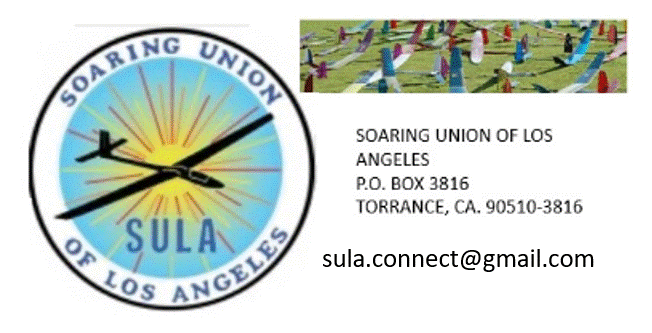Thunderbugs, a group of modelers who meet once a month at Norm’s Place
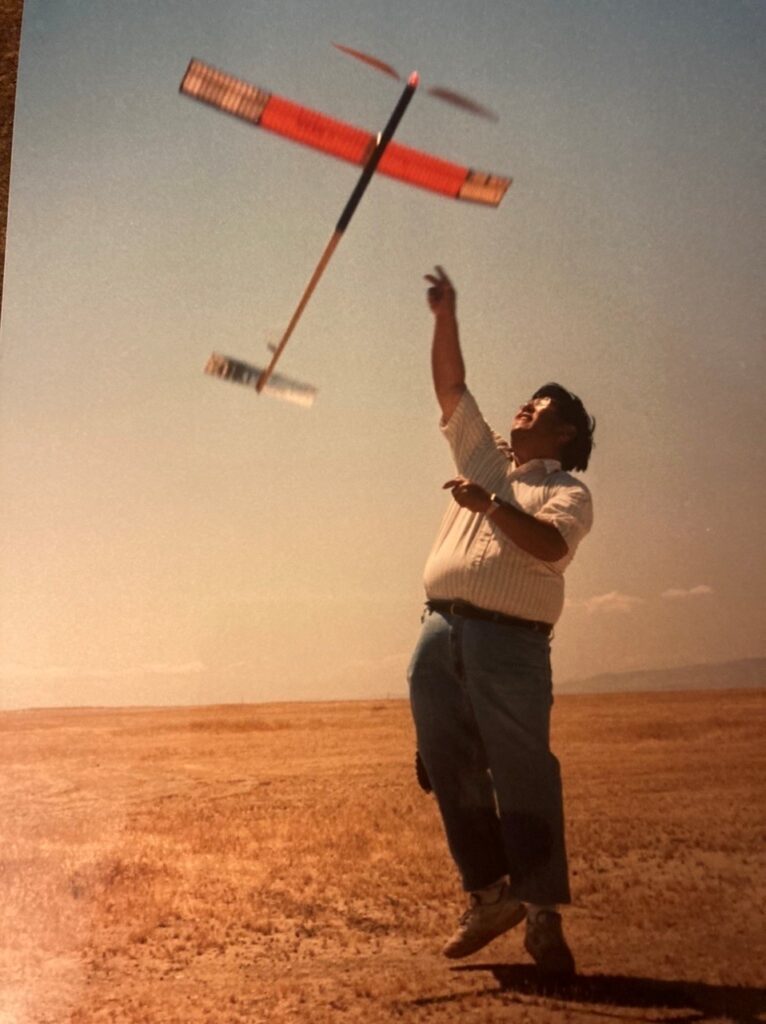
Norm called the January 2023 meeting to order with the following attendees: Phil Bernhardt, Ron Boots (via Zoom), Clint Brooks, Joe Brownlee, Ted Hidinger, Jim Hurst, Brad LeVine
(via Zoom), Roger Morrell (via Zoom), Chris Reck, John Swain (via Zoom), John Wright, and Pete Young.
Dialing in from New Zealand, Roger Morrell mentioned attending the New Zealand Nationals where the free flight venue was changed
two days prior to a smaller field; all went well although Roger chose not to risk his F1B models on the smaller field.
– Roger has been busy sorting out and cataloging John Malkin’s lifelong engine collection. A spreadsheet listing,
eight pages total, was sent out earlier by Norm.
– John plans to travel to the US arriving early February and if any of the engines strike
your fancy, contact Roger ASAP and he’ll try to bring your chosen motors with him – act quickly! Note that the prices listed are in NZ currency,
appr. 65% US currency.
– Roger will be CDing the Isaacson Winter Classic and the Kiwi World Cup at Lost Hills in February, as well as helping out with the other several contests
planned for “Fab Feb”. More specific details on the February Lost Hills contests can be found here:
http://www.lhffmaa.com/events%202023/february.htm
– Roger reports that about half-a-dozen Ukrainian fliers will be attending. Also attending will be Len Surtees who may be bringing (and selling?)
his aluminum-skinned discus-launch DLGs; I made the mistake of referring to Len as “Roger’s flying buddy” and Roger immediately
corrected me: “Len’s an Aussie!” Oops!
Ted Hidinger showed an extremely historic engine, see Photo #1: the OS Max .15 from Larry Conover’s F1C Lucky Lindy,
Larry achieving a five-way first place tie at the 1960 World Championships at Cranfield, England. At Ted’s request, ace “engine guy” Paul Knapp will
restore the motor to display standards, with the engine destined to be displayed at the Craftsmanship Museum in Carlsbad.
http://www.craftsmanshipmuseum.com
– Ted recently posted several classic AMA gas free flight designs for sale, kits and plans, to Facebook. Designs include Satellites and Civy Boys
in different sizes. Contact Ted for more information.
– Ted kicked off a topic, single-bladed propellers, that evolved into a wide-ranging discussion of their as-known good and not-so-good aspects as
seen most commonly on control-line speed planes and rubber powered free flights. Advantages include: easier to shape and modify
a one-blader than a two-blade prop; possibly more efficient performance as a single blade prop isn’t exposed to the downwash of a
second blade. Disadvantages: no weight savings and possibly, higher weight (compared to a two blade propeller) as the metal
counterweight is disadvantageously mounted close to centerline; uncertainty whether a single-blade prop is or isn’t more efficient than
a conventional two-blade prop. The discussion group couldn’t recall any technical analyses in previous NFFS Sympo reports but there may
be such.
Control-line model roundup:
John Wright showed his Ringmaster model, see Photo #2, powered by a “redhead” McCoy 40. The engine has passed through several
owners and features a Dykes ring and button head plug insert; engine work and the Ringmaster build were by Dick McCoy!
Photo #2 John Wright’s classic Ringmaster model
In Photo #3, Phil Bernhardt looks
over a Top Flite Flite Streak that Norm is giving to Phil as a “beater” practice plane while Phil is busy designing & building a competition
stunter for his Brodak 40 engine.
Photo #3 Phil Bernhardt and his “beater” Flight Streak
Photo #4 shows Clint Brooks’ beautifully framed-up classic “Fierce Arrow” stunt model designed in the 1960s by
“Wild Bill” Netzeband with a design/construction article and plans published in Model Airplane News. Clint has decided to install electric propulsion
in his plane, a tight fit in the slim fuselage, it turns out. In addition to crafting intricate control linkages, Clint vacu-formed the fairly complex canopy
and motor cowl areas from, presumably, ABS sheet styrene plastic. Absolutely exquisite workmanship throughout!
Fierce Arrow’s MAN plans:
https://aerofred.com/details.php?image_id=81159&mode=search
Photo #4 Clint Brooks’ e-power Fierce Arrow control-line stunter
Ron Boots Zoomed in and showed us his 1938-1939 Kansas Wakefield model designed by Ernie Linn, see Photo #5.
Ron has created a 50% version to meet SAM rules for the “1/2 Size Wakefield” event and is aiming to get the plane trimmed
out and flying soon.
https://www.ebay.com/itm/295027020148
Photo #5. Ron Boots and his 1/2 size Kansas Wakefield model
John Swain, also Zooming, told the group that for 2023, he’s going to focus on e-power models rather than campaign
both e-power and rubber as done in 2022. He’s finishing up a Starduster 350 and may be flying and competing at Lost
Hills in February.
Brad Le Vine is shown in Photo #6 with his 1938 Stout Contest Winner designed by Arthur Beckington and published
in Air Trails February 1939. Brad reports the 39″ span model is extremely light and will be ready to test-fly soon. Brad
casually mentioned he has about 20 free flight models that are completely built and are waiting for trimming sessions!
Photo #6 Brad and his Stout Contest Winner.
Chris Reck dropped in tonight and others recalled that Chris’ father Floyd Reck drew the kit plans
for Paul Gilliam’s classic Civy Boy gas free flight. The Civy Boy was Ted Hidinger’s first gas powered
free flight model and he’s built this design in many sizes including an 1800 sq in “D” size version(!)
Those memories triggered a general discussion on the active free flight model clubs of the 1950s and 1960s.
– The San Valeers were based at Sepulveda Basin while the Long Beach Thunderbugs’ home field was the Vessels Ranch
in Los Alamitos, the Thunderbugs frequenting Swaney’s hobby shop on Long Beach Boulevard. Both clubs had
many active fliers and were arch rivals for many years!
– Another active club – the Sky Hoppers of Orange County (SHOC). In the 1960s, Mel Schmidt
was an active designer and competitor with his SHOCER gas designs.
Pete Young gave an update on shipping costs using Pirate Ship, the online business that ships using
UPS assets and infrastructure, but at much reduced costs. Pete had a model kit shipped, 36″ x 9″ x 12″,
8 lbs, from upstate New York to Los Angeles. USPS Ground shipping quote: $105, Pirate Ship: $35! He’s used Pirate
Ship 12 times in the last year, all with total satisfaction. www.pirateship.com
– A few meetings ago, Pete displayed a 1/2A control-line model, the Mel Anderson swept wing X-45, all-balsa and
completely ready to fly with an Anderson Spitzy .045 motor installed.
Anderson X-45 RTF 1/2A control-line model
At tonight’s meeting, John Wright brought up that the X-45 model can be seen flying in a
Abbott & Costello movie, “Abbott and Costello Go To Mars”! In addition to the
buffoonish duo, the movie features several then-current Miss Universe contestants and
an introduction to a promising Swedish starlet named Anita Ekberg!
– Sure enough, the Anderson X-45 model is seen (and heard) flying as the movie starts
and thankfully, the flying is soon concluded and spares the watcher from needing to watch
the rest of the movie!
Norm brought out several beautifully built HLGs and gave a “Master Class” on balsa wood selection and
shaping using razor planes. He first described how different balsa wood grains – A, B, and C (quarter grain)
are produced by careful sawing and planing from a balsa tree’s trunk. He described the best uses
of each grain type and emphasized that for HLG work, very light quarter grain is the best.
– Balsa Facts https://www.go-cl.se/balsa.html
– Norm’s formula for calculating balsa weight in pounds/foot: Weight in grams, divided by volume in inches, times 3.81, equals pounds per cubic foot
On razor planes, Norm brought out several planes while mentioning that a Google search on “razor
planes” will readily produce many different razor planes available at reasonable cost! Shown in
the photo, the following: Kobalt (uses a proprietary blade), a Little Giant (a favorite),
two anonymous planes (no OEM markings), and Bruce Kimball’s all-wood plane. With the exception of
the Kobalt, the other planes shown use double-edge razor blades.
– Proper choice of double-edge razor blades: a proper double-edge razor blade can be vintage Gillette Blue
Blades of 1920s vintage, made with carbon steel – more modern steel double-edge blades are too soft, chip
easily and aren’t suitable! Norm recommendsTreet carbon steel razor blades available at quite reasonable cost from Amazon..
– make sure you get the carbon steel “Black Beauty” blades.
– Seattle-ite Bruce Kimball makes the stylish all-wood plane shown in small “batch” production runs. Contact
Bruce at [email protected] (mailto:[email protected]) to verify availability and prices.
Background on Razor Planes – https://jeffpeachey.com/2011/08/17/razor-blade-planes-an-overview/
Jeff is a leather worker and, it turns out, a razor plane is useful for thinning leatherwork to suit
various needs. His writeup on different OEM razor planes is meticulously done and provides
a lot of insight on the advantages (or disadvantages) of different types.
Background information for hand-launch gliders:
– A website covering design, construction, finishing, flying etc. of HLGs, a good resource.
AMA Glider (https://www.amaglider.com)
– Stan Buddenbohm’s site with several HLG designs of varying size and complexity.
Stan’s Stuff (https://www.amaglider.com/?p=view&a=stans-stuff_jan-2022)
– Stan’s tip for a proven DLG airfoil (https://www.amaglider.com/?p=view&a=stan-buddenbohm-dlg-suggestions
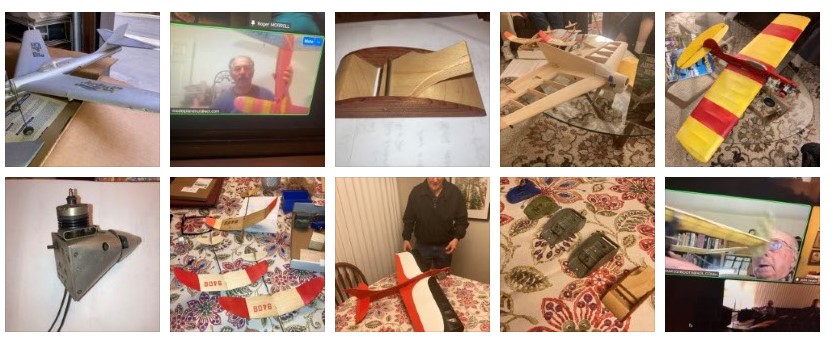
shots as LA area health statistics have been trending unfavorably in recent weeks.
Roger Morrell Zoomed in from New Zealand and reported that fair summer weather has arrived, allowing Roger to resume flying;
he’s a member of New Zealand’s F1B team that will be competing in France later this year. Other items from Roger:
– He’s busy organizing the FAI events that will be flown at Lost Hills during “Fabulous February”. He reports an increase of
interest & participation in the ‘vintage’ F1B and F1C events, so much so that the Isaacson Memorial may be expanded from
its present 2-days to 3-days.
Model Aviation’s coverage of a past “Fabulous February” CD’d by Norm, an excellent recap with photography by Brian Furutani:
https://www.modelaviation.com/fabulous-february-2016
– Roger reported that Australian model-meister Len Surtees is planning to attend this year’s Fabulous February
contests, and will be flying his aluminum-skinned Catapult Gliders, available for sale for (only) $250!
– Alex Fin is making high-quality replicas of classic model aircraft diesel engines, using modern
tools and techniques. His website: http://www.redfinengines.com/ For an amazing lineup of beautiful
multi-cylinder engines (glow and diesel), go to http://www.cre8tionworx.co.nz
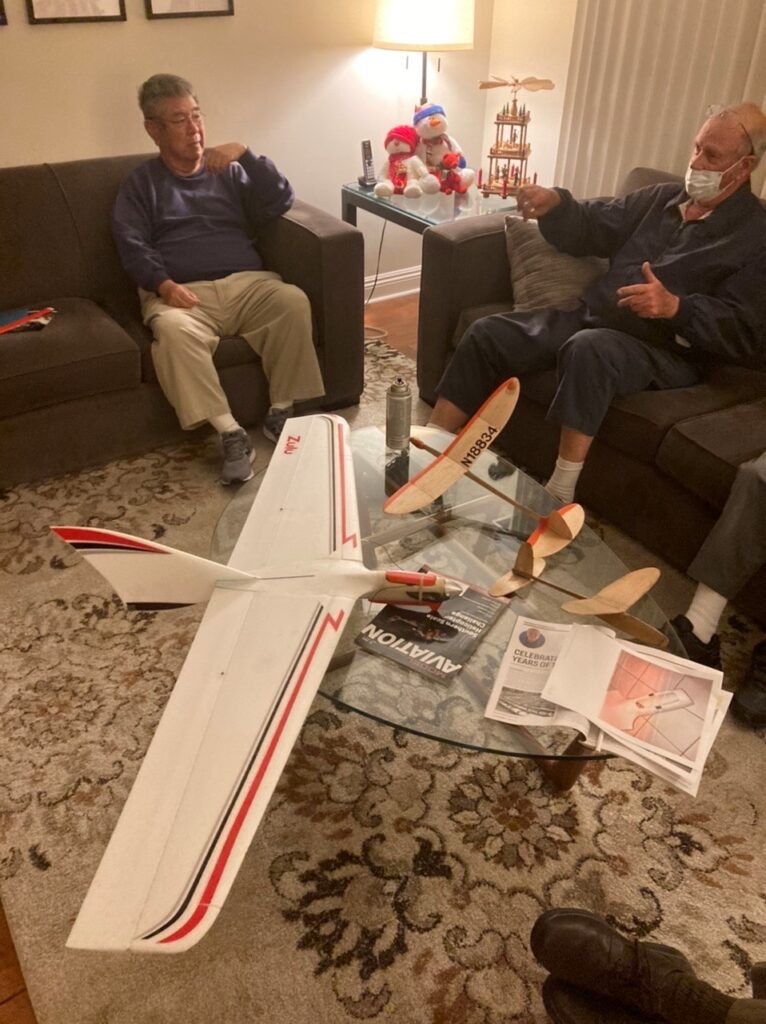
Joe Brownlee reported on last weekend’s Toys for Tots control-line event at Whittier Narrows. The combat fliers
were well-organized and had a decent fliers’ turnout on both days; particularly impressive was competition in
the F2B Fast event that featured ‘world-class’ models and engines spec’d to FAI rules. Joe and John Wright were among
the fliers in Fox 35 Speed, the event won by Hulan Mathies. Three big bags of toys were collected and will be
handed over to the Marine Corps for dispensing to children for the holidays.
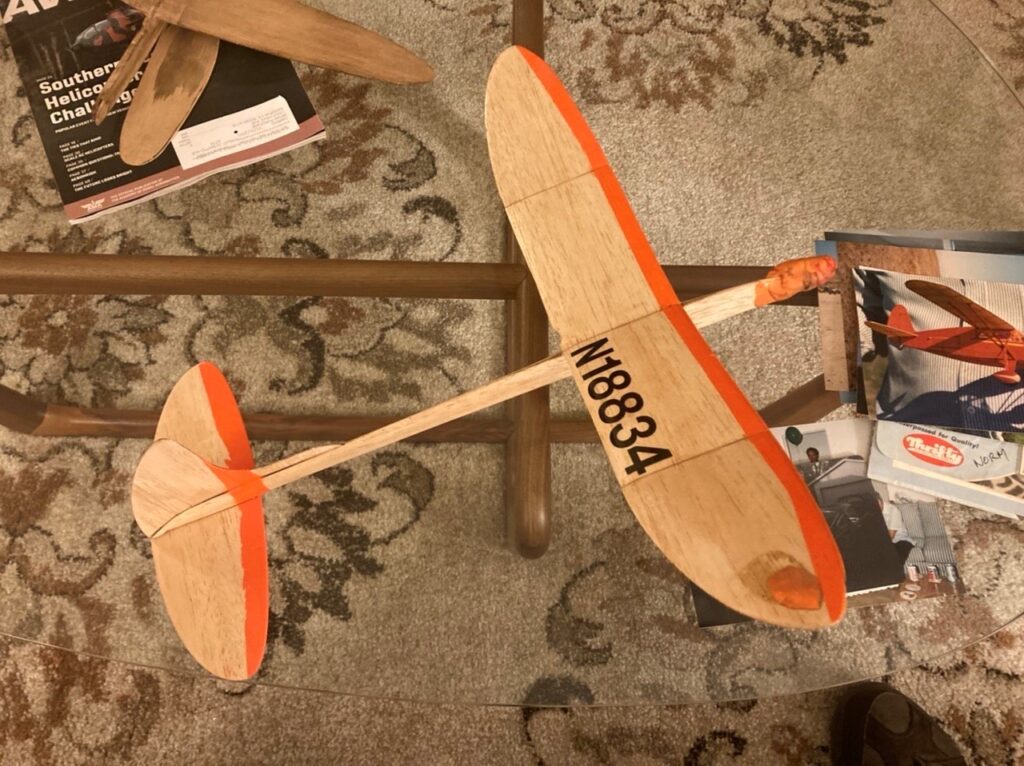
Brad Le Vine attended and flew last month’s “Dual Club” contest at Lost Hills. The weather was perfect both weekend days
and attendance was good. Here’s a YouTube video showing Brad flying his Comet Clipper; the video starts with an aborted
ROG attempt, followed by a second launch, successful with a beautiful ROG and long flight following.
Ever prolific, Brad has finished a second Tops A-1 model that replaces the first one
lost at the SAM Champs. He’s finishing up a 1938 Stout Contest Winner designed by Arthur Beckington and published
in Air Trails February 1939. https://plans.modelaircraft.org/product/stout-1938-winner/ See Photo #1 for a photo of
the Stout’s fuselage, check out the beautiful formers’ alignment!
– Brad has this tip for fliers with old diesel fuel, he ‘rejuvenates’ the old fuel by injecting fresh ether, details:
I have some old cans of diesel which would not run a engine only pop on occasion so I added about 30% ether from a
automobile starting additive can to the old fuel and then ran 2 different engines with my good Aerodyne diesel as a comparison /
baseline, then I installed the newly mixed old fuel / ether and both engines started within a couple of flips of the prop and ran
much faster / stronger and these airplanes will require a re-trimming session with the added new power. The starting fluid was
bought at a general store, Johnson brand and costs about $3.00 for a 12 ounce can. I ran 5 tank fulls thru the engines and no discrepancies were noted.
– Brad reports on butyrate and nitrate ‘dope’ and thinner available from Univair, a supplier in Aurora CO specializing in supplies for builders and fliers of full-scale aircraft. Univair’s prices are substantially less than Aircraft
Spruce’s
prices, with free shipping for orders over $300. www.univair.com A combined purchase by local modelers would make
a lot of sense to save on shipping costs!
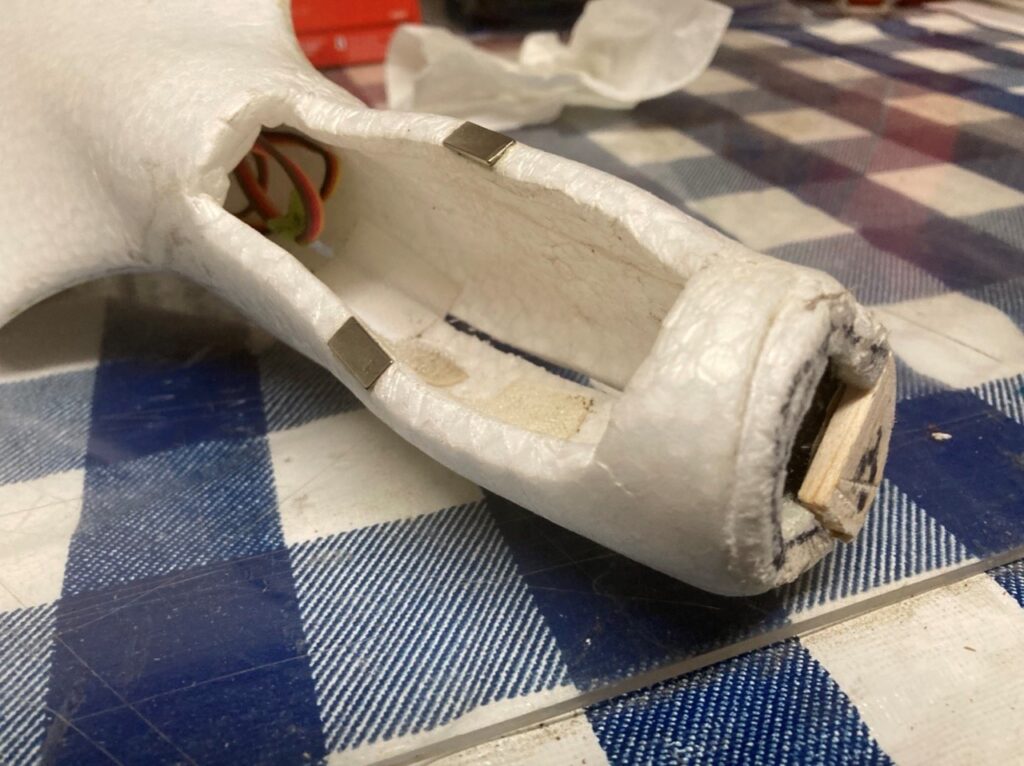

Pete Young displayed an all-foam r/c motorized glider, a Zulu developed by Sup-Air, made from EPO (Expanded PolyOlefin).
The plane had a bad crash at Point Fermin that crumpled the forward fuselage pretty badly, see Photo #5. What Pete
did to straighten out the damaged areas: he immersed the fuselage in boiling water and the damaged foam
‘swelled up’ nicely to its former shape, see Photo #6. No other effort was required and he repair was complete in less than a minute!
Since then, the fuselage has been fiberglassed both inside and outside for added robustness. CAUTION: this technique
ONLY works on EPO foam and WILL NOT work on softer EPP (Expanded PolyPropylene) foams!
– Pete brought out a spray can of Varathane oil-based polyurethane that in earlier tests this year, appeared to fuel-proof
(using 15% nitro glow fuel and unleaded gasoline) a model finish consisting of ‘rattle can’ sprayed enamel (Rustoleum, Krylon, Sherwin-Williams).
He prepared a painted balsa test strip that had been treated with the Varathane paint, and Norm agreed to do testing with high nitro fuels.
Here’s Norm’s ‘quick look’ comments:
“Ran a test on your sample. Used 25% nitro. Placed a row of raw fuel drops and wiped them off at one minute intervals for five minutes.
Saw no evidence of damage to the finish. I then let one set for 15 minutes with the same result. Looks very good. Will repeat tests with 35% nitro.”
See Photo #8 for picture of the Varathane can (purchased at Home Depot).
– Brian Furutani brought out two metal samples provided by a jewelry hobbyist. The first was a cylinder of Niobium and Steel,
the second was a flat sheet of “Raindrop Damascus”, a specialty alloy used for custom knife blades and jewelry, with really beautiful &
intricate grain structure, see photo #9. Brian will let us know what he makes with these exotic materials! More information:
https://en.wikipedia.org/wiki/Niobiumhttps://www.amazon.com/Damascus-Raindrop-Billet-Making-Knives/dp/B0165OT6YA
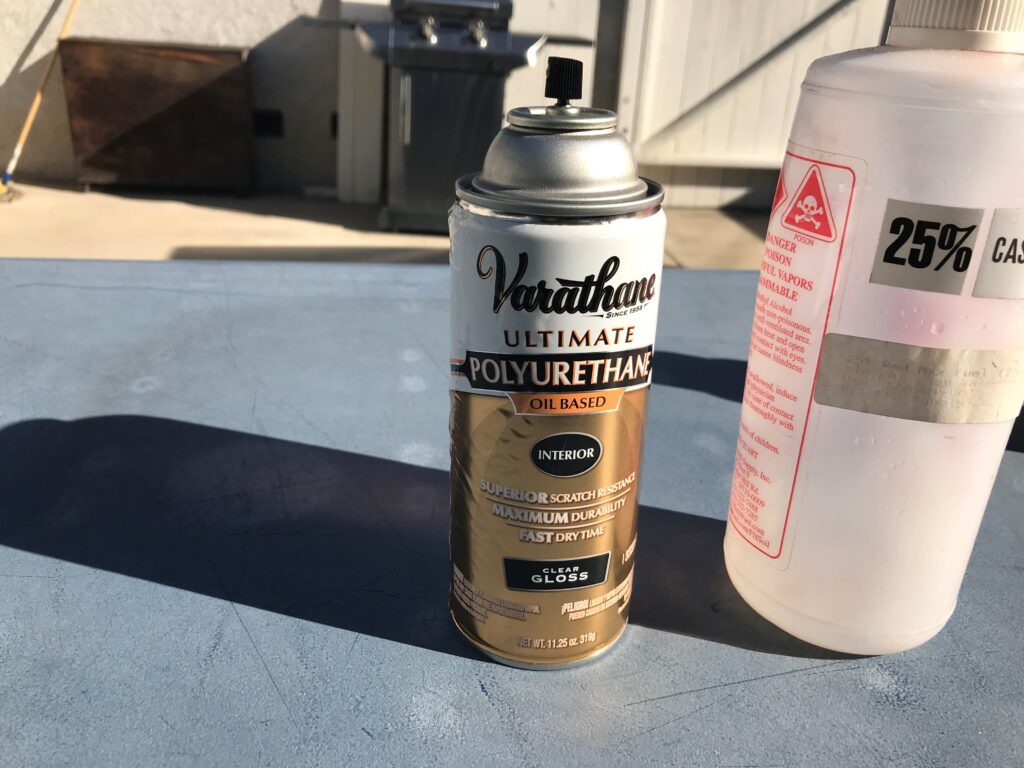
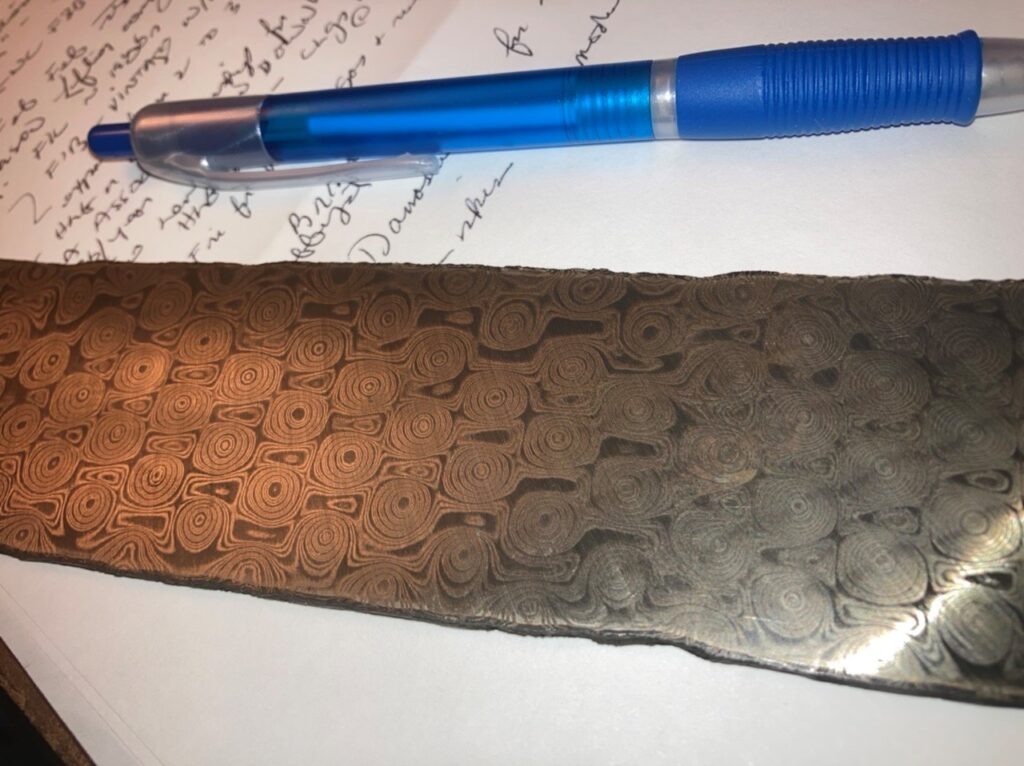
Phil Bernhardt reported excellent results ordering balsa and spruce from www.balsawoodshop.com Light ‘contest’
balsa is also available at higher prices. Free shipping for orders $75 or more, sounds like a real deal for a group buy!
– Phil reports he has the “itch” to build a competitive control-line precision aerobatics (aka ‘stunt’) model. He plans to
use a Brodak 40 glow engine and is compiling lists of the hardware and other supplies that he would be using; the
exact model design hasn’t yet been selected. Phil received lots of helpful suggestions from the assembled group!
Stay tuned, with Phil’s terrific craftsmanship, the new plane should be superbly built and finished!
Hugh Langhans filled us in on the Black Sheep Squadron’s activities. Hugh flew in their recent Low Wing model contest, he and
Dave Gee losing out to Don Butman who flew stellar times. Another Low Wing contest is scheduled for February, contact
Hugh for details.
-Hugh reported that model flying at the Grassy Knolls area at Balboa Park may disappear soon as the area is slated to be
converted into rowing ponds for the 2028 Olympics. It’s not known at this time if the area will be returned to its prior condition
after the Olympics.
– Hugh reported that small free flight model flying at Balboa Park has been hampered by weather forecasts that
turned out to be overly pessimistic. Pete Young suggested Wunderground, a weather service that has multiple
weather stations with individual forecasts for a given area. The weather stations for the Sepulveda Basin area:
https://www.wunderground.com/weather/us/ca/encinol
– Hugh has been working on a most unusual scale model aircraft: a model of the Boeing XF8B prototype developed
during WW2 as a “five-in-one” project for use as a fighter, interceptor, dive bomber, torpedo bomber,
and ‘level’ bomber. One prototype was built and proved to be overweight and an underperformer, the project
eventually terminated. Hugh’s model will be 27″ span and will feature a contra-rotating propeller, as did the
full-scale version. https://en.wikipedia.org/wiki/Boeing_XF8B
John Wright brought back two HLGs, the first a Thermic B built by Joel Chesler, the second a Thermic 18. See Photo
#3.
Thermic 18: https://outerzone.co.uk/plan_details.asp?ID=575
Thermic B: https://outerzone.co.uk/plan_details.asp?ID=4425
John reported that Ed’s Hobby Shop in Covina has gone out-of-business, with all the store stock sold off at
a recent sale.
Pete Young displayed an all-foam r/c motorized glider, a Zulu developed by Sup-Air, made from EPO (Expanded PolyOlefin).
The plane had a bad crash at Point Fermin that crumpled the forward fuselage pretty badly, see Photo #5. What Pete
did to straighten out the damaged areas: he immersed the fuselage in boiling water and the damaged foam
‘swelled up’ nicely to its former shape, see Photo #6. No other effort was required and he repair was complete in less than a minute!
Since then, the fuselage has been fiberglassed both inside and outside for added robustness. CAUTION: this technique
ONLY works on EPO foam and WILL NOT work on softer EPP (Expanded PolyPropylene) foams!
– Pete brought out a spray can of Varathane oil-based polyurethane that in earlier tests this year, appeared to fuel-proof
(using 15% nitro glow fuel and unleaded gasoline) a model finish consisting of ‘rattle can’ sprayed enamel (Rustoleum, Krylon, Sherwin-Williams).
He prepared a painted balsa test strip that had been treated with the Varathane paint, and Norm agreed to do testing with high nitro fuels.
Here’s Norm’s ‘quick look’ comments:
“Ran a test on your sample. Used 25% nitro. Placed a row of raw fuel drops and wiped them off at one minute intervals for five minutes.
Saw no evidence of damage to the finish. I then let one set for 15 minutes with the same result. Looks very good. Will repeat tests with 35% nitro.”
See Photo #8 for picture of the Varathane can (purchased at Home Depot).
– Brian Furutani brought out two metal samples provided by a jewelry hobbyist. The first was a cylinder of Niobium and Steel,
the second was a flat sheet of “Raindrop Damascus”, a specialty alloy used for custom knife blades and jewelry, with really beautiful &
intricate grain structure, see photo #9. Brian will let us know what he makes with these exotic materials! More information:
https://en.wikipedia.org/wiki/Niobiumhttps://www.amazon.com/Damascus-Raindrop-Billet-Making-Knives/dp/B0165OT6YA
